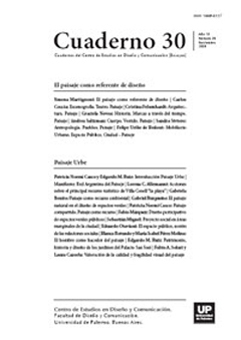El espacio público, sostén de las relaciones sociales
Abstract
The excessive growth of the cities, without a clear planning, has ended at a strong fragmentation of its spaces.
In a same city we can find sectors very constructed, densely lived and with numerous activities, whereas other segments
apparently do not have any defined function and are perceived like “vacant spaces”. The overflowing of the cement on our
surroundings has let interstices that are not occupied, surely due to lack of economic value or infrastructure of services.
This deficiency can be understood as a positive value from the point of view of the design of the landscape, because thanks
to these speculations, we have at present vacant spaces which are possible to be planned with the aim of improving the
quality of life of our society. Government and community are the ones in charge of the conduction of decisions that will
renew those spaces or will maintain them in lethargy until they will be used by those social actors who demonstrate major
management power in front of their competitors. The technological advances of the last years increasingly favor virtual
relations over physical ones in terms of people meeting other people. Public spaces planned from an integrating vision, can
favor and maintain the social relations in healthful surroundings.
References
Dollfus, O. (1978). El análisis geográfico. Barcelona: Oikos-Tau.
Gorelik, A. (1998). La Grilla y el Parque. Espacio público y cultura urbana en Buenos Aires, 1887-1936. Quilmes: UNQ.
Santos, M. (1988). Metamorfoses do espaco habitado. Sao Paulo: Hucitec.
Los autores/as que publiquen en esta revista ceden los derechos de autor y de publicación a "Cuadernos del Centro de Estudios de Diseño y Comunicación", Aceptando el registro de su trabajo bajo una licencia de atribución de Creative Commons, que permite a terceros utilizar lo publicado siempre que de el crédito pertinente a los autores y a esta revista.


